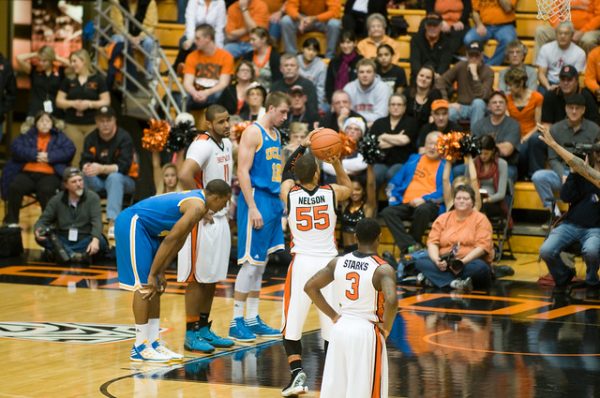
“I find that the three major administrative problems on a campus are sex for the students, athletics for the alumni and parking for the faculty.”
This somewhat humorous 1957 quotation from University of California President Clark Kerr captures just how highly athletics rank in the priorities of university administrators. Today, as new research from Ryan King-White and Adam Beissel demonstrates, athletics continue to be at the center of university governance because they are assumed to assist universities with branding, recruiting, and revenue-raising.
The prevailing logic of American higher education holds that opportunities for corporate partnership are always good, that universities are competing for student-consumers, and that high-profile athletics will assist in both of those realms. King-White and Beissel use the case study of Towson University’s decision-making on athletics to demonstrate how that logic allows university leadership to expand athletics without real input or opposition and hide the actual cost to students.
King-White and Beissel are long-time professors, students, and coaches at Towson University, and they use these positions to develop a rich case study drawing on interviews, ethnographic observation, and archival data to chronicle the rapid expansion and promotion of Towson athletics. They label Towson, a public university in Maryland, an “aspirational university” that invested in athletics and facilities as part of an effort to grow the brand and prestige of the school. Towson made the decision to move to Division I NCAA athletics in the late 1970s, with football joining in 1987. In 2007, a new president doubled down on what had previously been a fits and starts expansion and poured resources into men’s football and basketball to attempt to become a true “peer” to the other public state school, the University of Maryland, College Park.
The investment did change the campus. Towson built new facilities, contracted with Aspire Group, and signed corporate agreements with Pepsi, UnderArmour, and Van Wagner Sports and Entertainment. But despite hopes that it would be self-sufficient, today Towson is one of the most subsidized athletic departments in the nation, with 79% of its budget coming from student fees or direct subsidies from campus. Student fees have increased 545% since 1980.
The decision-making process at Towson didn’t raise too many eyebrows because — despite mixed research on the actual effectiveness of athletics in raising revenue or a school’s profile — using athletics in this way is consistent with how Americans expect university leaders to act. That means that when Towson treated students like consumers, overrode concerns from faculty, and treated athletics as a potential revenue stream, it wasn’t acting outside of the logic of any other university in its same position. The idea of athletics as a solid investment in the standing of the school fits neatly into our image of American colleges, despite also knowing the actual costs.

Comments